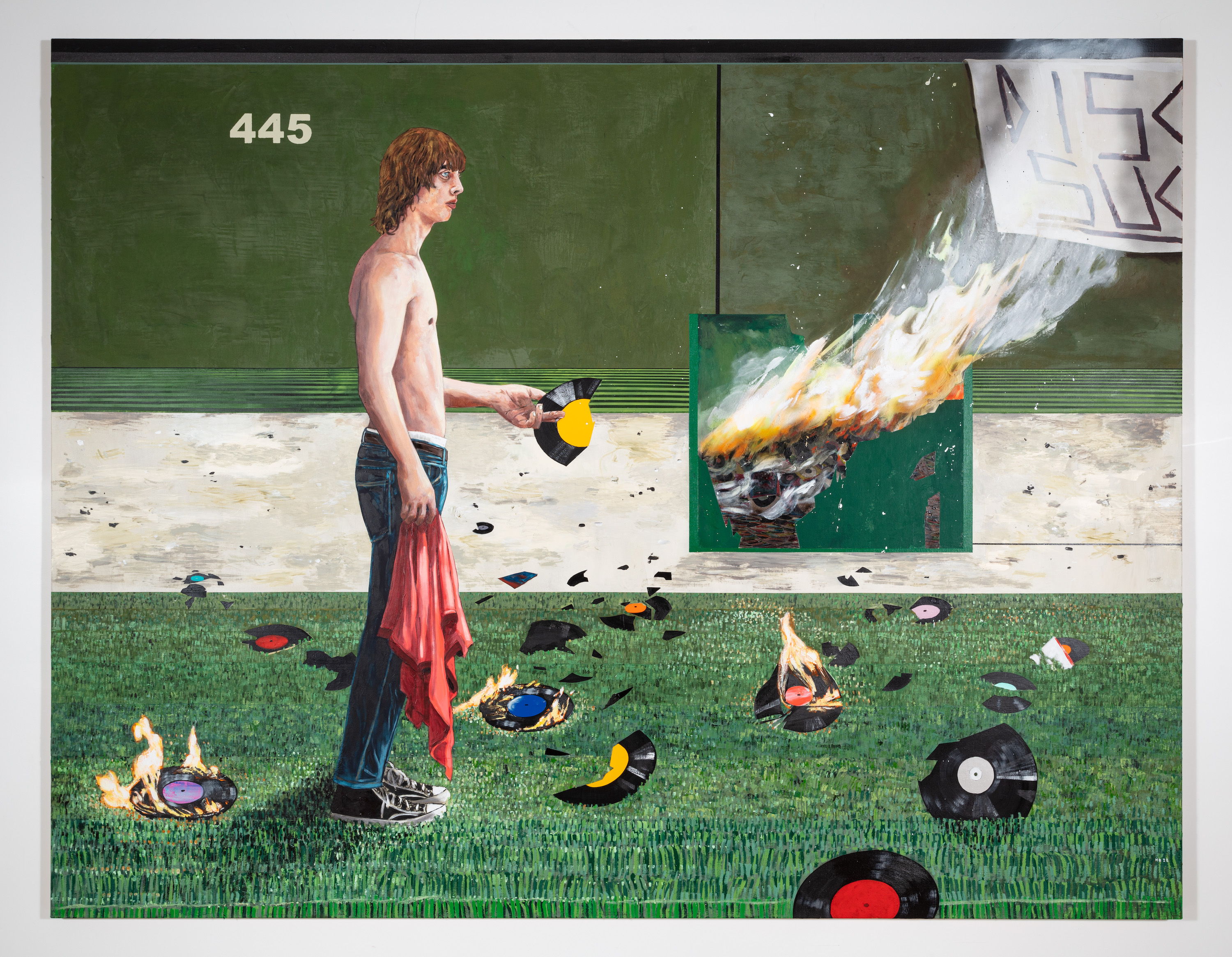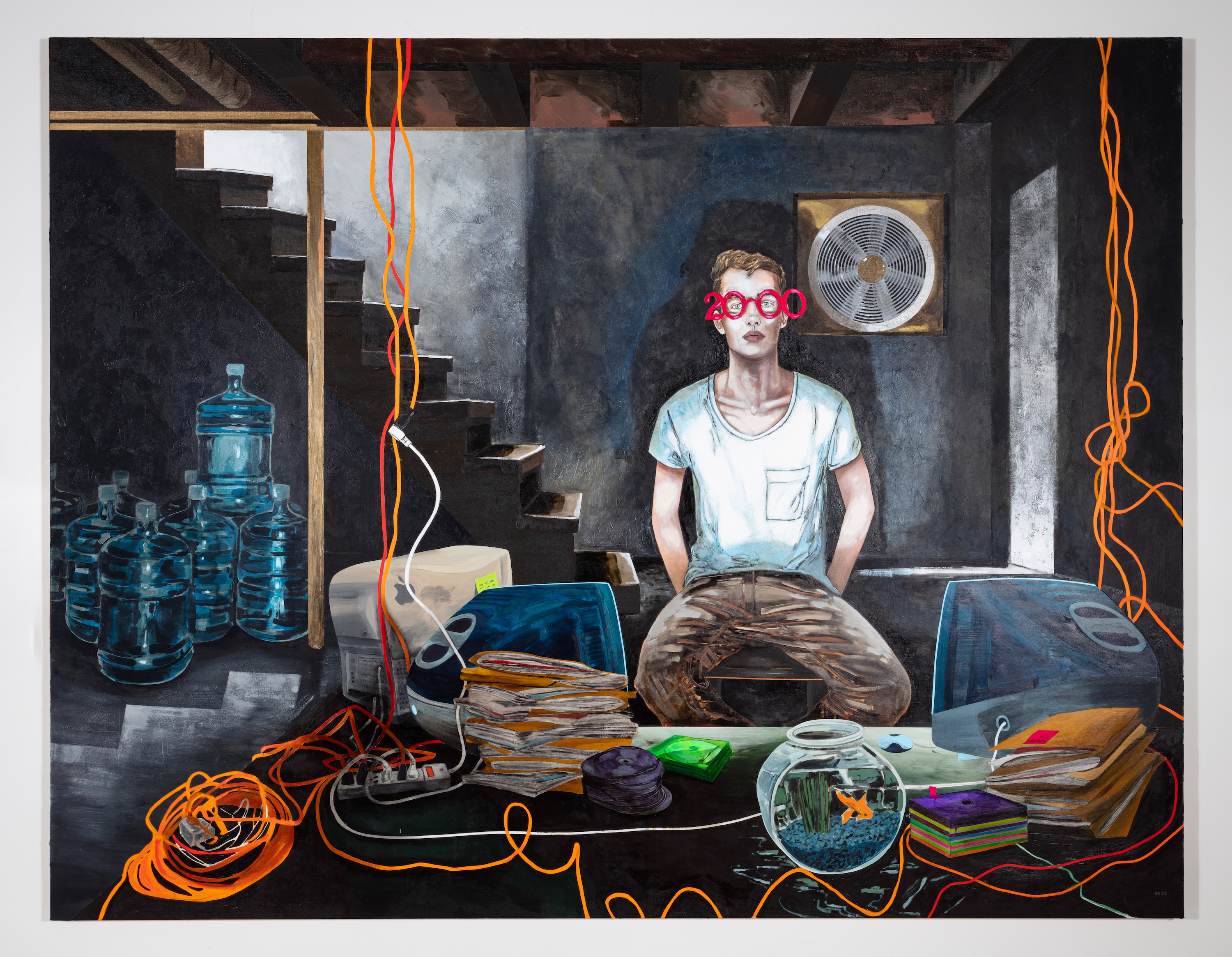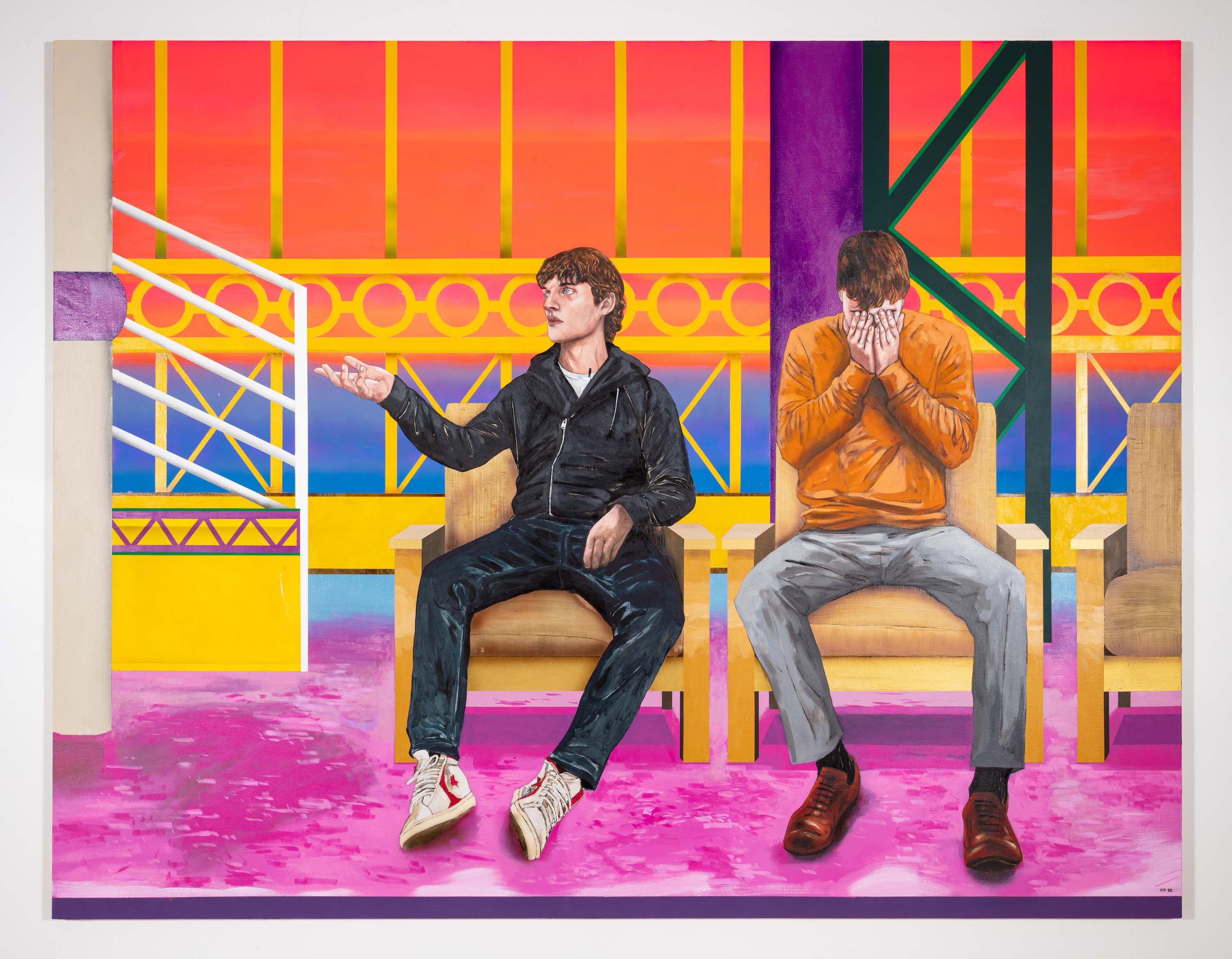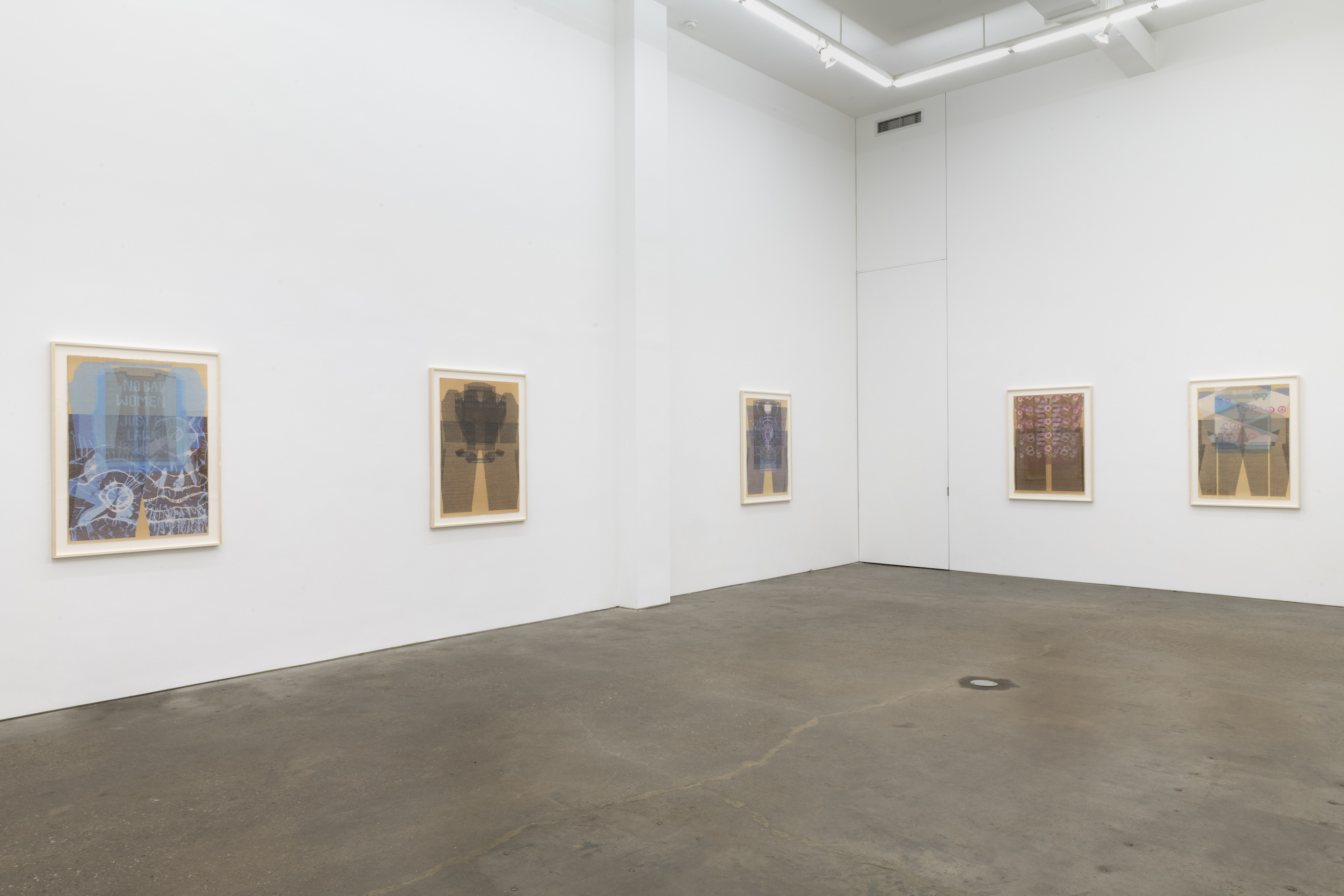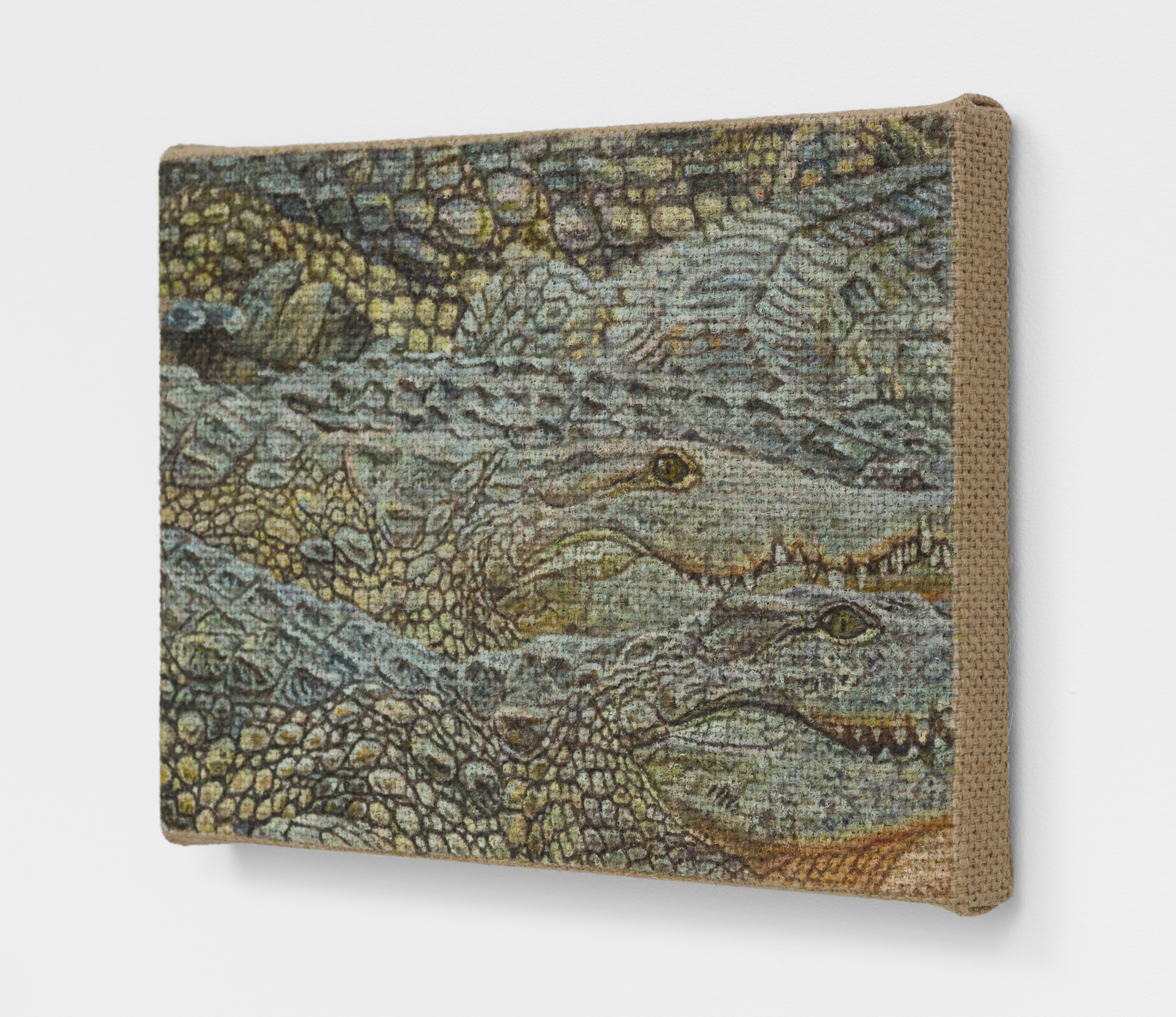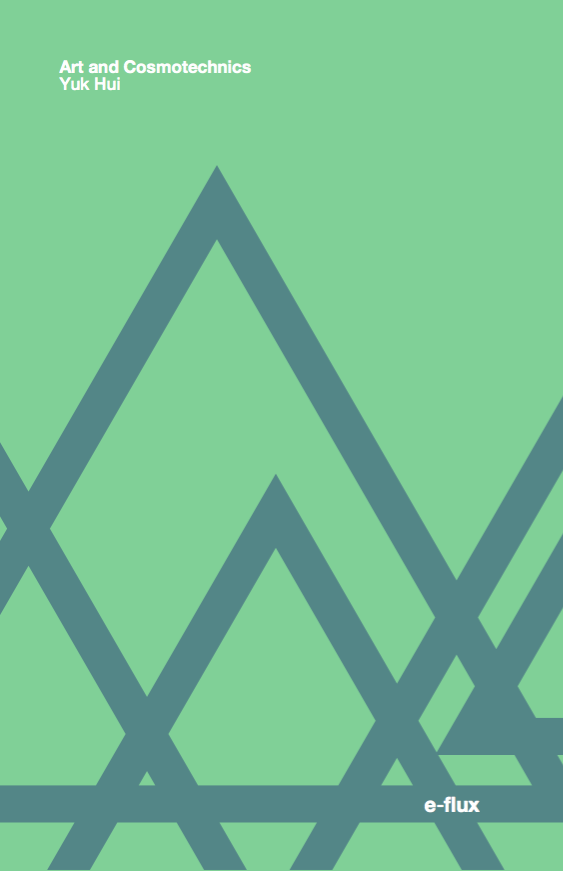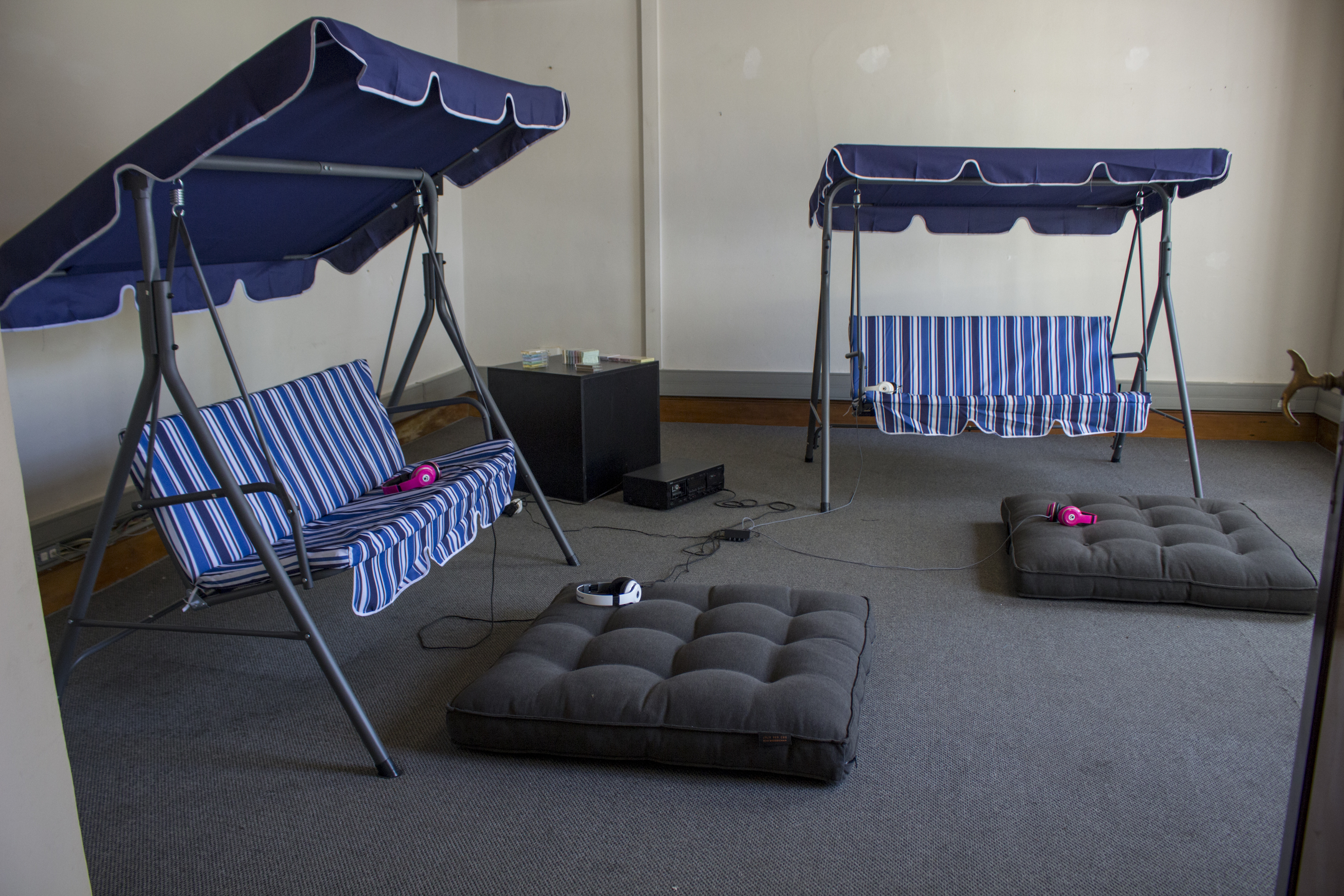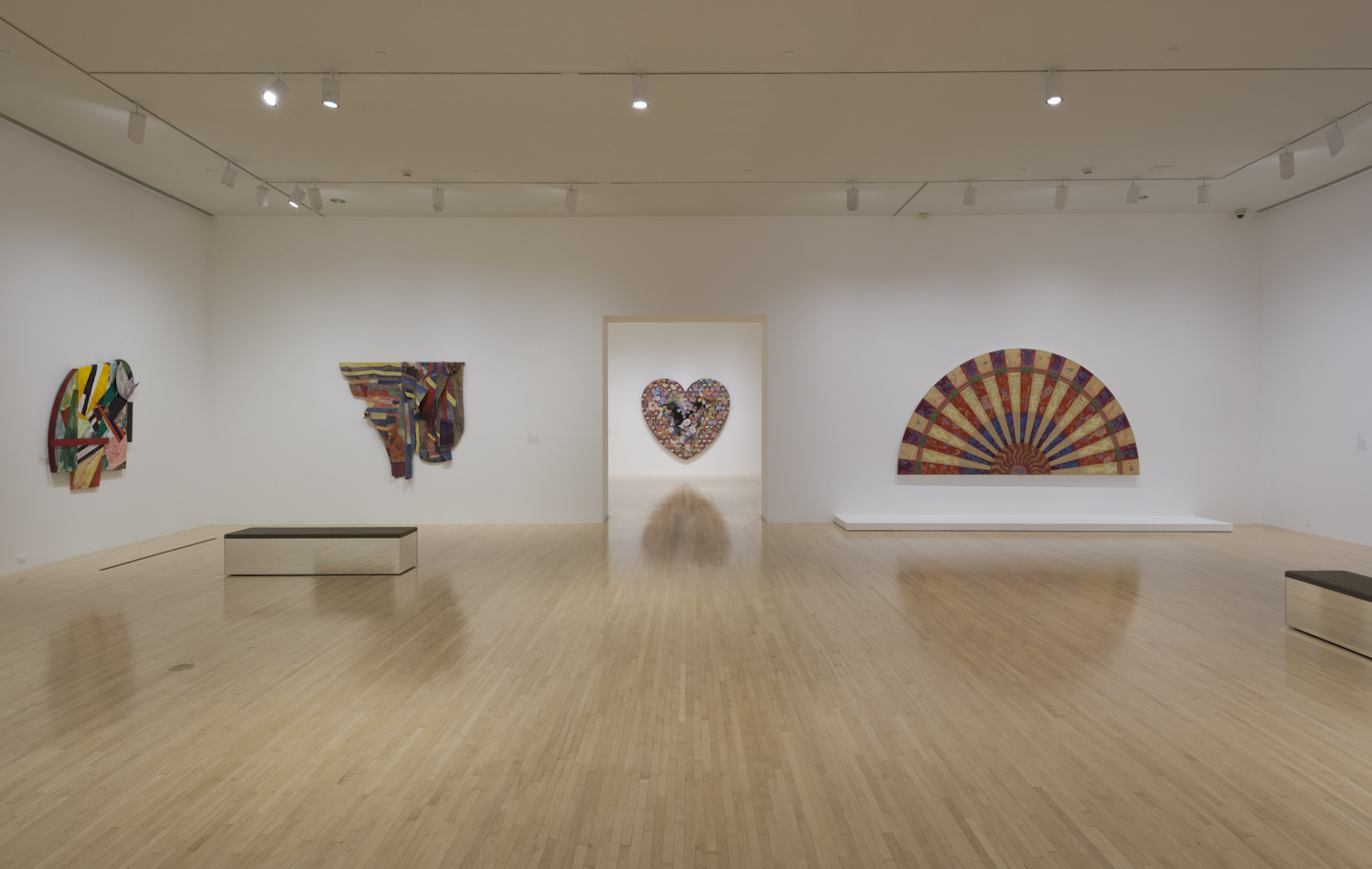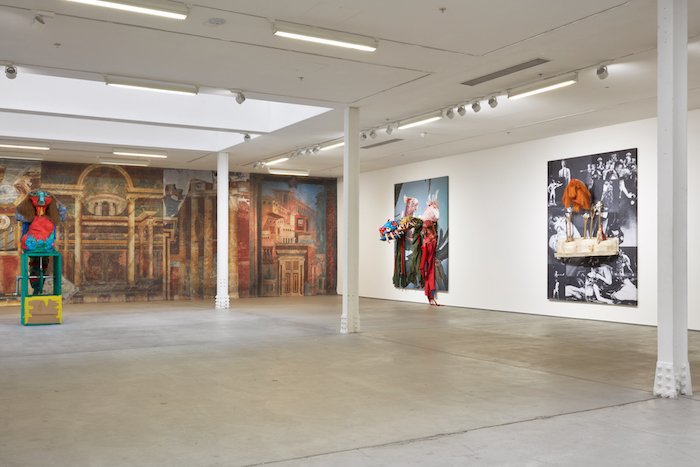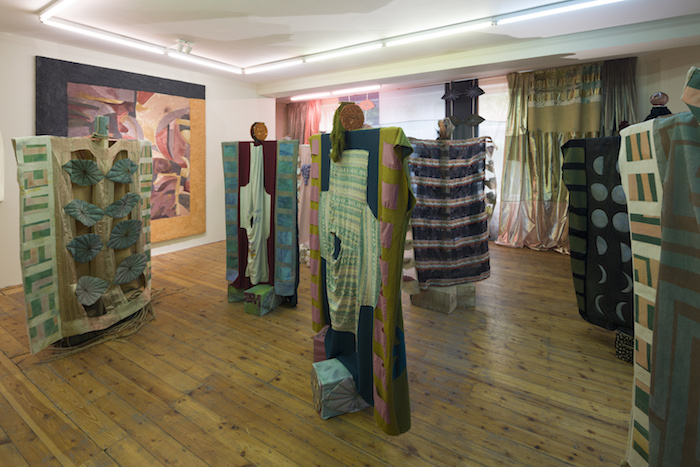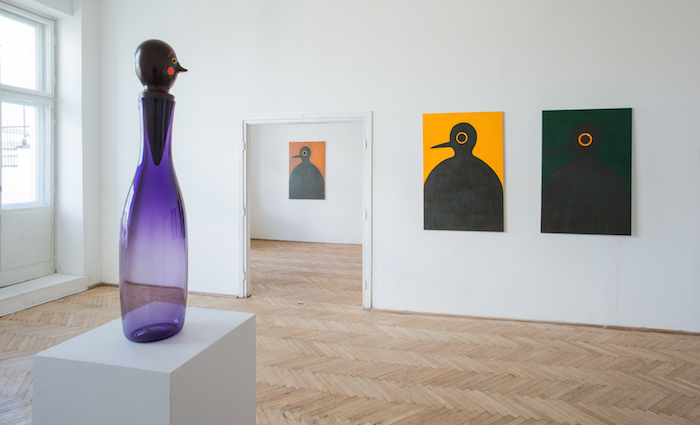June 10–July 16, 2022
There’s a spot in the two-person exhibition “House Spirits” from which Hernan Bas’s large-scale painting Disco Demolition Night (all works 2022) appears framed by Zadie Xa’s shamanic robe Kimchi rites, kitchen rituals, hanging near the front of the gallery, and her kaleidoscopic constellation in stitched linen-and-denim, Seven full moons, on the back wall. In this sightline, the artists seem an unlikely pairing: the content and references of Xa’s fabric works draw on her Korean heritage while Bas’s acrylic paintings are rooted in white American pop culture. In bringing these two artists into dialogue, however, this exhibition foregrounds the way each traffics in a kind of visual folklore. The tension between the former’s new, hybrid identities and the latter’s melancholy depictions of the demise of a monolithic culture reflects changing social dynamics.
Two of Xa’s brightly colored robes hang opposite each other, suspended from the ceiling. The open folds on the front of Princess Bari fall in concentric half circles, made of linen hand-dyed in shades of coral, chartreuse, and sky blue, the hues seeping together to create a riotous sunset. The back is festooned with stitched knives and a cascade of rainbow ribbons running down the back, each ending with a photo printed on cotton of kimchi. Kimchi rites, kitchen rituals cuts a more angular form with its sharp lapels, but its palette is no less exuberant. Here, a vibrant checkerboard background is affixed with knives jutting at odd angles and more printed cotton images of kimchi, while a neat row of fabric flowers encircles the hem.
The myth of Princess Bari is typically recounted only during traditional funerary rites. It’s a redemptive tale of a young woman who, after being cast away by her royal family as a child, is called upon to save them with a magical elixir sourced from the underworld. In many versions of the story, Princess Bari’s reward for rescuing her family is divinity, and she’s often identified as the patron goddess of shamans and tasked with guiding the souls of the dead to the afterlife. In Kimchi rites, kitchen rituals, Xa directly refers to another pillar of Korean cultural heritage: the annual late fall gathering of women to make the winter’s store of kimchi. Kimchi-making is labor-intensive and time-consuming, but also a way for women to gather and bond. Together, these two works are avatars of the broader themes at work in Xa’s practice, conveying both the folkloric and the lived experience of the Korean diaspora, but with a distinctly female sensibility. These robes weave together the mythic power of the shaman with the everyday power of a group of women to sustain families and communities.
In contrast to Xa’s distinctly female purview, Bas’s paintings in the exhibition are populated solely by young white men. One of three monumental paintings in the exhibition, Bas’s Disco Demolition Night, depicts one such man standing shirtless on the edge of the outfield grass near the warning track on a baseball field. His expression is distant, and in one hand he insipidly proffers a broken record. Discarded records litter the ground around him, some ablaze, and nearby is a literal dumpster fire full of records. In the upper right corner of the canvas, the edge of a banner reading “Disco Sucks” trails off into the space outside the painting. Bas’s referent here is the notorious night in July 1979 on which an ill-conceived baseball promotion at Comiskey Park in Chicago ended in a fully-fledged riot. While this incident is often misleadingly credited with killing disco’s popularity, it can also be seen as a sort of proto-Trumpian instance of white male rage against a perceived threat to their cultural dominance.
Diagonal from here, Bas’s December 31st, 1999 (11:58 pm) shows another young white man, sequestered in a dark basement, wearing kitschy “year 2000” glasses as he awaits the turn of the millennium. A pair of Bondi Blue iMacs anchors his desk amid a tangle of cords, while a stack of full water jugs in the background underscores the apocalyptic feel of the scene. With their pointed cultural touchstones, Bas’s paintings at first feel firmly rooted to a historical moment: the end of disco, but also of LPs; the precipitous turn of the new century; and in Ambush Television, the era of shocking personal reveals on daytime television. All of Bas’s paintings feature themes of ending and devastation: in this conversation with Xa’s works, they augur the downfall of white male hegemony.
